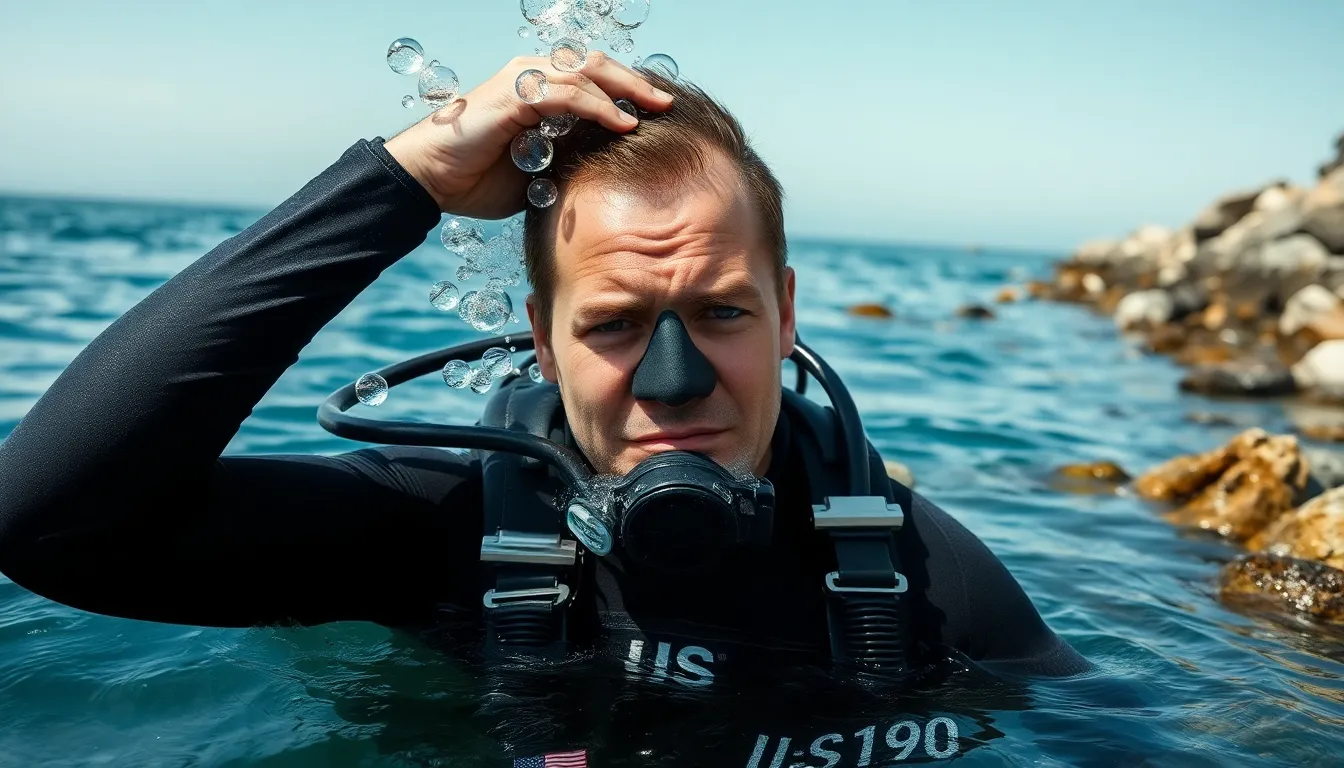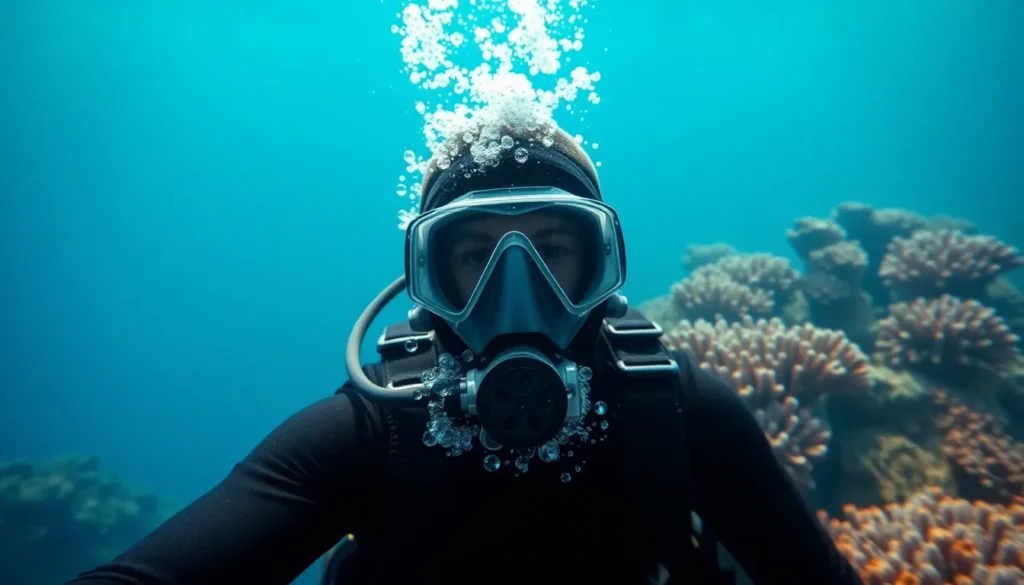Table of Contents
ToggleDiving into the depths of the ocean can be thrilling, but it also comes with its fair share of risks. One of the most notorious dangers lurking beneath the waves is decompression sickness, commonly known as “the bends.” This condition sounds like something out of a sci-fi movie, but it’s very real and can turn a fun underwater adventure into a life-or-death situation faster than you can say “bubble trouble.”
So, can the bends kill you? The short answer is yes. While not everyone who experiences the bends faces dire consequences, the potential for serious injury or even death exists. Understanding the risks and knowing how to prevent them can mean the difference between a memorable dive and a trip to the emergency room. Buckle up as we dive deeper into this underwater enigma and explore the ins and outs of this potentially deadly condition.
Understanding The Bends
Decompression sickness, commonly known as “the bends,” poses serious risks for divers. This condition arises when nitrogen bubbles form in a person’s tissues or bloodstream following rapid ascent from deep water.
What Is The Bends?
The bends occur when accumulated nitrogen, absorbed under high pressure, tries to escape too quickly during ascent. Symptoms include joint pain, dizziness, and difficulty breathing. Severe cases can lead to paralysis or death. Medical intervention is crucial, as early treatment significantly enhances recovery chances.
Causes Of The Bends
The bends result primarily from too rapid an ascent after prolonged exposure to high-pressure environments. While diving, a diver inhales a mixture of gases, including nitrogen. Upon ascent, the decrease in pressure causes nitrogen to form bubbles. Risk factors include deep dives, long dive durations, and inadequate decompression procedures.
Symptoms Of The Bends

Recognizing symptoms of the bends is vital for a timely response to decompression sickness. Early detection can significantly improve recovery chances.
Early Warning Signs
Joint pain manifests in many divers soon after they surface. Additionally, dizziness can occur, making it difficult for individuals to remain stable. Skin rashes or itching may develop, signaling potential nitrogen bubble formation. Fatigue and unusual weakness are common but often overlooked indicators. Some individuals report experiencing trouble concentrating, impacting their ability to make sound decisions.
Severe Symptoms
Severe symptoms can escalate quickly and require immediate medical attention. Difficulty breathing can intensify, leading to feelings of suffocation. Chest pain may arise, often mistaken for other issues. Numbness and tingling in limbs or muscles can indicate nerve involvement. Paralysis may occur in critical cases, underscoring the condition’s seriousness. In extreme situations, symptoms can progress to unconsciousness or even death without prompt intervention.
Risks Associated With The Bends
Decompression sickness poses significant health risks, especially in the context of deep-sea diving. Understanding the complications and identifying at-risk individuals is crucial for preventing severe outcomes.
Life-Threatening Complications
Severe complications from the bends can arise rapidly, affecting multiple body systems. Symptoms such as respiratory failure and neurological damage may develop instantly. In some instances, untreated cases lead to paralysis, shock or even death. Advanced medical interventions often become necessary to address these complications. Monitoring symptoms closely can aid in early detection, improving the chances of a successful recovery. Not every diver experiences life-threatening issues, but vigilance remains essential during and after dives.
Who Is At Risk?
Certain individuals face heightened risks for developing the bends. Divers engaging in prolonged or deep dives demonstrate higher susceptibility. Those without proper training in decompression protocols increase their likelihood of encountering this condition. Additionally, pre-existing health issues, like asthma or dehydration can elevate risks. It’s essential for divers to assess their health status and experience levels before diving. Awareness of these risk factors promotes safer diving practices and enhances outcomes.
Prevention And Treatment
Prevention is crucial for avoiding the bends. Employing specific strategies significantly reduces risks associated with diving.
Preventative Measures
Adhering to safe diving practices is essential. Following established decompression schedules keeps divers safe. Proper training through accredited diving courses builds essential skills. Regularly monitoring one’s health ensures fitness for diving activities. Staying hydrated helps mitigate the effects of pressure changes. Ascending slowly from greater depths allows nitrogen to be released safely. Using dive computers or tables aids in managing ascent rates effectively. Heeding the advice of experienced divers provides additional safety insights. Emphasizing preparation prevents unnecessary complications.
Treatment Options
Timely medical intervention improves recovery prospects. Seeking treatment in a hyperbaric chamber effectively reduces nitrogen bubbles. Trained professionals administer oxygen therapy, which speeds up recovery. Monitoring vital signs ensures optimal care during treatment. Physicians may recommend intravenous fluids to rehydrate and stabilize the diver. Pain management techniques address discomfort associated with the bends. In severe cases, additional therapies may be necessary to address complications. Collaborating with medical teams ensures comprehensive care for all symptoms. Prioritizing early treatment enhances overall outcomes for affected individuals.
The bends can indeed be life-threatening if not addressed promptly. Understanding the risks associated with decompression sickness is crucial for anyone involved in deep-sea diving. Recognizing early symptoms and taking appropriate preventive measures can significantly reduce the likelihood of severe complications.
Divers should always prioritize safety by adhering to established protocols and seeking proper training. With timely medical intervention and awareness of the condition, the chances of recovery improve dramatically. Awareness and preparation are key to enjoying the underwater world while minimizing risks associated with the bends.







